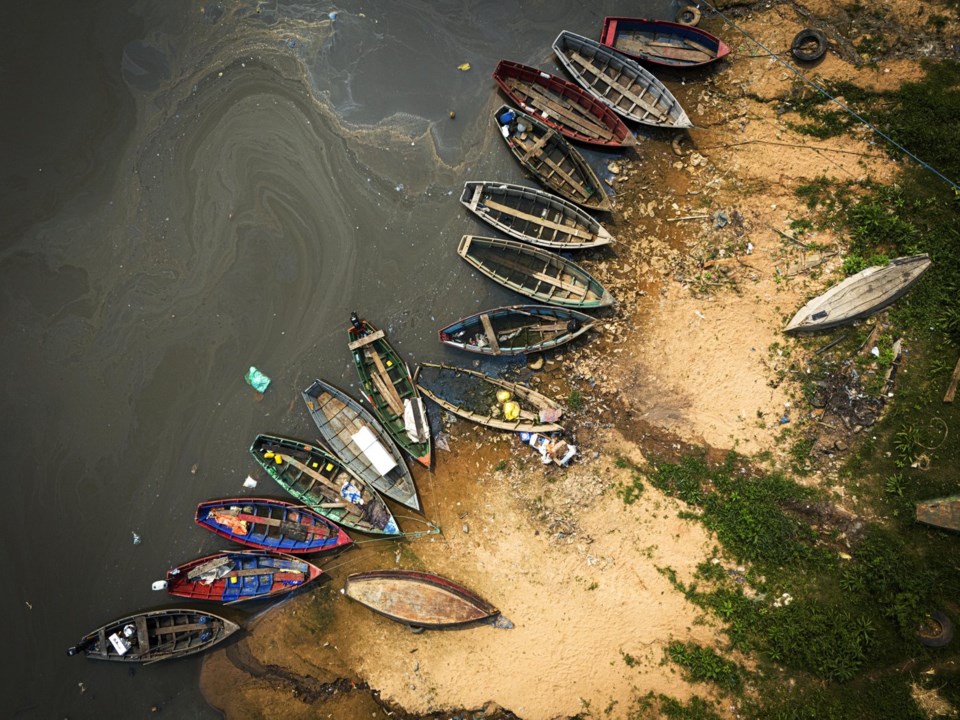ASUNCIÓN, Paraguay (AP) — A powerful drought in Brazil's Pantanal region led on Monday to the lowest water levels on the Paraguay River in more than a century, disrupting commerce on the major waterway, creating hazards for local transport and offering a grim warning for other parts of the world.
Paraguay's Department of Meteorology and Hydrology reported that water levels , dipped 89 centimeters (35 inches) below the meter's benchmark at the port of AsunciĂłn, the capital, the lowest point in 120 years.
The previous record-breaking drop occurred just three years ago, in October 2021 — a sign, experts say, of how droughts that starve the region's waterways are becoming more frequent and intense. The Amazon — the world’s most voluminous river — and one of its main tributaries, the Madeira River, at the city of Tabatinga.
The most immediate effect is being felt across landlocked Paraguay, one of the world’s leading exporters of agricultural commodities, which relies on the river to move 80% of its international commerce.
The head of Paraguay’s fishing union said Monday that the decline in water levels has put 1,600 fishermen out of work. On Monday, dozens of boats that would normally ply the waterway sat on bone-dry banks of sand.
“I have no way out,” said FermĂn GimĂ©nez, a sailor who became trapped Monday as the river literally dried up beneath his small barge. “It's a disaster.”
Originating in Brazil, the Paraguay-Paraná waterway runs 3,400 kilometers (about 2,110 miles) through Argentina, Brazil, Uruguay, Paraguay and Bolivia and into the open seas, making the region a vital transport hub for grain, corn, soy and other agricultural products.
In the last few days, disruptions have rippled from Paraguay across neighboring countries, with more than half of the river's shipping capacity halted or tied up in delays, according to Paraguay’s main shipping association. Only so much can be loaded onto cargo ships without the risk of getting stuck along the river’s shallow parts, it said.
That has created expensive headaches in countries including Brazil, which exports iron ore along the river, and Bolivia, which has been forced to reroute via a slower overland path. Paraguay, which relies on the river to generate electricity, also faces the eventual possibility of cuts in supply, said Raúl Valdez, president of Paraguay’s Center of River and Maritime Shipowners.
With no rainfall expected in the coming weeks, industry officials said there's no relief in sight. They anticipate losses in the hundreds of millions of dollars.
“Our main question is, will this now be a new pattern? No one is expecting a quick recovery,” Valdez said. “It’s a major concern for the whole region.”
Experts said the drying of the Paraguay River — as with other rivers from to to — reflects how population growth, climate change and deforestation have increasingly conspired with weak governance and inefficient irrigation practices to transform landscapes, upending delicate ecosystems and sending scores of communities scrambling for fresh water.
“All over we are seeing increases in droughts; they are longer, more intense, more frequent and more difficult to recover from,” said Rachael McDonnell, deputy director-general for research at the International Water Management Institute.
As rainfall becomes more erratic and the warming climate intensifies the cycles of flood and drought, McDonnell added, “we've lost the slack in the system."
With since since nationwide measurements began over seven decades ago, wildfires are also raging further downstream, in the forests along Paraguay’s northeast border with Brazil, where residents said Monday the air smelled of acrid smoke, and in parts of Bolivia, where the government has declared a national emergency.
___
DeBre reported from Montevideo, Uruguay.
Emilio Sanabria And Isabel Debre, The Associated Press



